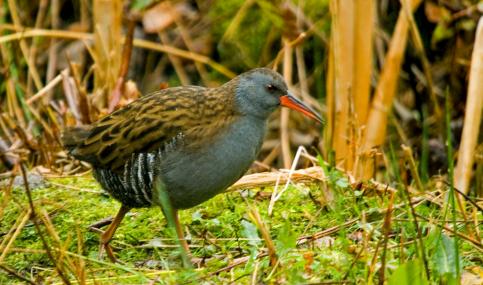A small relative of the moorhen and coot and about the same size as a redshank, water rails live in reedbeds and freshwater wetlands where they feed on invertebrates and small fish. Secretive and rarely seen they are more often heard calling - sounding like a piglet squealing, they are unmistakeable. Between 700 and 1,400 pairs nest in Britain.
Although water rails are not currently declining their reedbed and wetland homes are under threat from development, drainage and pollution. The Wildlife Trusts manage many wetland nature reserves for the benefit of the wildlife they support. You can help by supporting your local Trust and becoming a member; you'll find out about exciting wildlife happenings, events on your doorstep and volunteering opportunities and be helping local wildlife along the way.
